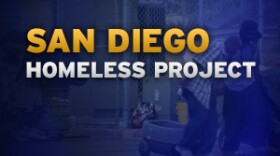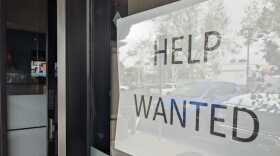We continue our special broadcast focusing on homelessness in San Diego. When it comes to success stories and how to address chronic homelessness, the state of Utah is often mentioned as a role model. In the last decade Utah has reduced its homeless population by more than 90%. The effort was led by a man who at one time answered questions about homelessness by saying the lazy bum should get a job.'s evolution on an outstanding success in housing the homeless has lessons for programs across the country. My guest is Lloyd Pendleton former director of Utah's homeless task force. Why do you think the "Housing First" concept produces such a dramatic improvement and reducing chronic homelessness? It meets the homeless individual where they are and allows them to continue to make that step into housing and not have to make other major changes until they are stabilized and ready to deal with mental health and substance abuse issues. At the beginning we thought it might not work. When you heard about the concept of "Housing First" was it the cost savings that appeal to you? Yes it made sense, an individual that's chronically homeless can cost the community $40,000 per year per person. You can house them for less than that. That was intriguing here in Utah, we are conservative state, we care about our homeless and was there a more effective way to help them move from the street into a more stable life. Both of those were intriguing. Many cities including San Diego have been using this model for a while. Why do you think it's been so remarkably successful in Utah? My observation is the model gets used by an agency and they will build a permanent facility using the "Housing First" model and approach. In Utah we took it as a statewide and I was loaned out from the LDS church to the state of Utah on a part-time basis to lead the effort in putting together a 10 year plan and start to implement it. We did it as a statewide basis and brought all of the individuals and agents these together, homeless service providers, the low income tax credit organization, we had state funds that we communicate -- committed. We put it together as a holistic approach for the state, that impacted the counties in communities. It was a concerted effort, one state vision. Historically, there hasn't been that kind of real collaboration between government and private agencies all joining together to combat homelessness. How do you begin to change that type of culture where everybody is doing their own thing? My observation has been, you need to have a community above the silos and when I say that the homeless service providers are in their own silo doing their work and you have the community block funding doing their own work, you have businesses, all of these different systems working away that are impacted by homeless. When you cremate -- create a committee above the silos you can look at the funding and coordinate the efforts. We have found it takes the political weird -- leader, Amir, Mayor. We will come together around a common approach and agreed upon vision statement and implemented on an areawide basis. When that happens you can begin to make the systemic changes needed to implement this new model of harm reduction "Housing First" approach. Utah is still confronting problems in finding housing for some people who are chronically homeless. So are we here in San Diego. How do you deal with that problem? We need another hundred units and they are being built in the next year or year and a half. We are down to 168 chronically homeless individuals counted down from 2000 and 2005. We know there are some chronically homeless people that will not come in. We call it functional zero. There are mental health issues or whatever, they will die on the street. As a community, we have committed to giving them housing opportunities. If they choose not to come and we will continue to reach out to them, there are some we know that will never come in. We were working on the chronic homeless segment, we've had over a 300% increase in family home -- homeless. In Salt Lake there are still homeless around the shelter, our state legislature has committed $29 million toward that, to restructure sums shelter systems and getting more housing. The homeless issue is not solved, the chronic homeless is pretty well the systems in place in the housing is in place. D you think every region could have the kind of success that you have had with chronic homelessness? Yes I do. For the state of California, there is a legislative effort going through based upon the Utah model of creating a state homeless coordinating committee. I've suggested to them to have regional or local homeless committees. You take San Diego County and create a committee that is above the silos with political leadership in financial leadership, so you can approach and resolve the issues that are chronic. I very much believe it can be done in every region. You need to break it down and have the local leaders leading in that effort. I've been speaking with Lloyd Pendleton warmer director of Utah's homeless task force.
When it comes to success stories in addressing chronic homelessness, Utah is often mentioned as a role model.
The state housed more than 1,800 homeless people in the last decade, reducing its chronic homeless population by more than 90 percent.
The effort was in part led by Lloyd Pendleton, the former director of Utah’s Homeless Task Force.
“We put it together as a holistic approach for the state, which impacted the counties and the communities," Pendleton said. "It was one concerted effort, one homeless plan, one state vision that we all rallied around."
The Department of Housing and Urban Development defines a person who is chronically homelessness as someone who has lived on the streets for longer than a year, or has been homeless four times or more in the past three years.
What can San Diego learn from Utah's effort?
Pendleton discusses the factors that led to the state's success on KPBS Midday Edition on Wednesday.








